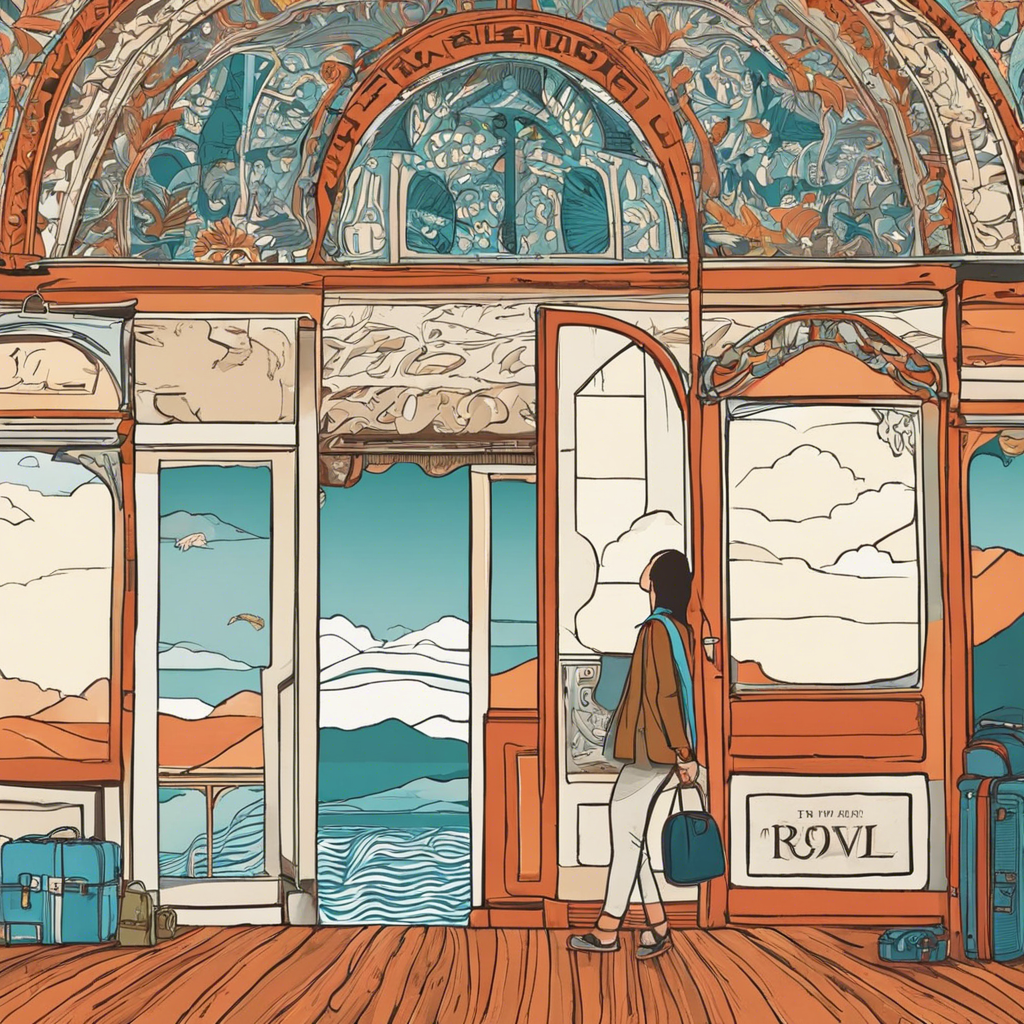In our fast-paced world, it’s easy to get caught up in the rush of checking destinations off our bucket lists, often at the expense of truly connecting with the places we visit. But what if we hit the pause button and embraced the concept of slow travel? This approach encourages travelers to linger, delve deeper, and foster a more intimate understanding of a new place.
Slow travel is about more than just ticking off famous landmarks. It’s a mindset that invites you to explore a destination through a lens of curiosity and open-mindedness. It means wandering down side streets, striking up conversations with locals, and partaking in experiences that resonate with you personally.
When you embrace slow travel, you allow yourself to be fully present in your surroundings. You notice the little details that make a place unique—the scent of fresh-baked bread wafting from a bakery, the vibrant street art that adorns the walls, or the sound of a lively market where vendors call out to passersby. These sensory impressions become part of your travel memoir, creating a rich and textured narrative of your journey.
Taking the road less traveled often leads to unexpected gems. Veering off the beaten path can unveil hidden treasures that only locals know about. This could be a secluded waterfall, a family-run restaurant serving authentic cuisine, or a vibrant community garden brimming with life. By embracing spontaneity and serendipity, you open yourself up to experiences that cannot be scripted or staged.
Slow travel is about immersing yourself in the local culture and rhythm of life. It means participating in traditional activities, learning a few words of the local language, and embracing the pace at which locals live their daily lives. This immersive approach allows you to forge deeper connections and gain a more authentic perspective of the place you’re visiting.
To truly embrace slow travel, consider staying in one place for an extended period. This could mean renting an apartment for a month or settling into a quaint bed and breakfast for a week. By doing so, you shift from being a mere passerby to becoming a temporary member of the community. You’ll develop a familiarity with your surroundings, uncover your favorite haunts, and perhaps even make lifelong friends.
Another aspect of slow travel is sustainability. This style of traveling often aligns with eco-friendly practices, as it typically involves slower modes of transportation, reduced waste, and a focus on local experiences. By taking the time to understand and respect the environment and culture of your destination, you can ensure that your presence has a positive impact.
Embracing the art of slow travel is a transformative way to explore the world. It allows you to create meaningful connections, cultivate a deeper understanding of different cultures, and develop a more fulfilling travel experience. So, the next time you plan a trip, consider trading haste for immersion, and you just might discover the hidden gems that lie beyond the tourist trail.
One of the greatest benefits of slow travel is the opportunity it presents for personal growth and self-discovery. By removing yourself from the comforts and routines of home, you open up space for reflection and introspection. Whether it’s journaling about your experiences, contemplating the beauty of a sunset, or engaging in conversations with individuals from different walks of life, slow travel encourages you to explore your thoughts and emotions in a way that might not be possible in your everyday life.
As you immerse yourself in new cultures and interact with locals, you’ll also gain a deeper understanding of the world and your place in it. You’ll realize that there is more than one way to live a fulfilling life and that happiness and contentment can be found in the simplest of pleasures. This shift in perspective can be incredibly rewarding, fostering gratitude, humility, and a more open-minded worldview.
The act of slowing down and fully immersing yourself in a new place also invites you to be more mindful and present. You begin to notice the little things that often go unnoticed when you’re rushing from one attraction to the next. The vibrant hues of a blooming flower, the playful laughter of children in a nearby park, or the intricate details of a centuries-old painting—these moments of beauty and joy become more accessible when you embrace a slower pace.
Slow travel also encourages you to step outside your comfort zone and try new things. Whether it’s sampling exotic cuisine, attempting to communicate in a foreign language, or partaking in a local tradition, these experiences push you to expand your horizons and challenge yourself in ways you never thought possible. Each new experience becomes a building block in your journey of self-discovery.
Moreover, the act of navigating unfamiliar environments and adapting to different cultures fosters resilience and resourcefulness. You learn to embrace uncertainty, to be comfortable with the unexpected, and to find creative solutions to challenges that arise. These skills are not only beneficial during your travels but can also be transferred to other areas of your life, helping you navigate life’s twists and turns with greater ease and confidence.
The process of self-discovery through slow travel is often enhanced by the people you meet along the way. Conversations with locals and fellow travelers can provide new insights and perspectives, challenging you to rethink your own beliefs and values. These exchanges can be incredibly enriching, leading to profound realizations about yourself and the world around you.
In addition to personal growth, slow travel also promotes cultural appreciation and understanding. By spending extended periods in one place, you have the opportunity to delve deeper into the local customs, traditions, and way of life. You begin to understand the complexities and nuances of a different culture, moving beyond stereotypes and surface-level impressions. This fosters a more empathetic worldview and a deeper appreciation for the diversity and richness of our global community.
Slow travel also encourages responsible and sustainable tourism practices. By taking the time to connect with local communities and support local businesses, you contribute directly to the economic well-being of your destination. This form of travel promotes a more equitable distribution of tourism revenue and helps preserve the cultural integrity of the places you visit. It also encourages environmentally conscious choices, as you become more mindful of your impact on the natural environment.
In an era where many of us are constantly connected to technology, slow travel offers a chance to unplug and reconnect with nature. Whether it’s hiking through pristine forests, camping under starry skies, or simply enjoying a picnic in a local park, these experiences remind us of the beauty and tranquility that nature provides. They encourage us to put down our devices, quiet the noise of daily life, and find solace in the natural world.
As you traverse new landscapes and encounter diverse ecosystems, slow travel also fosters a sense of stewardship for the planet. You witness firsthand the fragility and beauty of our natural world, prompting a desire to protect and preserve it for future generations. This sense of environmental responsibility can translate into more sustainable choices and a heightened awareness of the impact of human actions on the planet.
In conclusion, slow travel is about much more than the destinations we visit. It is a journey of self-discovery, cultural appreciation, and a deeper connection to the world around us. By embracing this mindset, we open ourselves up to transformative experiences that enrich our lives and expand our understanding of the world. So, let us savor the journey, linger in the moments, and embrace the art of slow travel—for it is in these moments of immersion that we find the true essence of exploration.

